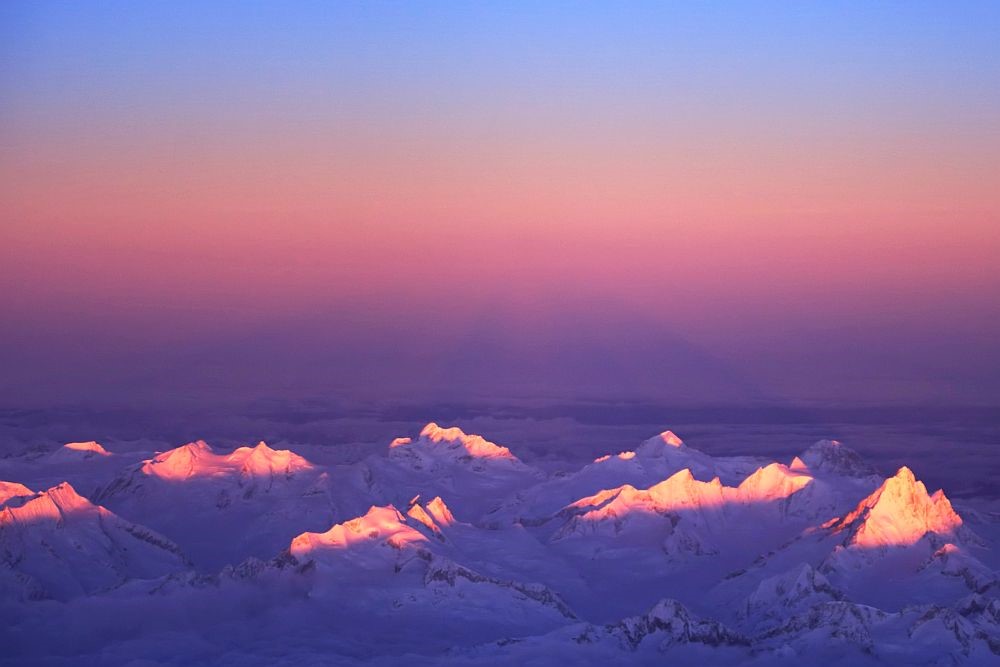Description

Disclaimer: Copyright infringement not intended.
Context
Astronaut Captures Stunning Alpenglow Phenomenon near Hindu Kush from ISS.
Details
Alpenglow
- Alpenglow refers to the indirect sunlight reflected or diffracted by the atmosphere before sunrise or after sunset, giving a horizontal reddish glow near the horizon opposite the Sun.
- One can also witness soft shadows in addition to the reddish colour when Alpenglow occurs.
- Alpenglow occurs when direct sunlight around sunrise or sunset is reflected off airborne precipitation, ice crystals or particulates in the lower atmosphere, as the sunlight has no direct path to reach a mountain.
- It occurs during the twilight hours before sunrise or after sunset. It can also occur in the first minutes after the sun rises or sets.
- Alpenglow typically occurs in the range of colors between red, pink, and orange.
- This is because, these are the longest warm rays of electromagnetic wave (light) — they reach various surfaces, while cold rays are shorter and disappear faster in the atmosphere.
- After sunset, if there are no mountains the aerosols in the eastern sky can be lit up by the remaining red light scattered above the edge of Earth's shadow. It produces a pinkish band on the opposite side of the Sun's direction, named the Belt of Venus.
Hindu Kush
- The Hindu Kush mountain range is stretches over 800 kilometres and winds through Afghanistan, reaching into Northern Pakistan and Tajikistan. This region constitutes the western expanse of the Hindu Kush Himalayan region.
- The Hindu Kush Himalayan region spans eight countries, including Afghanistan, Bangladesh, Bhutan, China, India, Nepal, Myanmar, and Pakistan.
- It is considered the Third Pole (after the North and South Poles), and has significant implications for climate. It contains vast cryospheric zones and is also the world’s largest store of snow and ice outside the polar region.
- It is home to approximately two billion people, providing them with crucial water resources, ecosystem services, and sustenance. Despite its importance, the region is experiencing alarming rates of warming, which is three times the global average.

International Space Station (ISS)
- A space station is essentially a large spacecraft that remains in low-earth orbit (LEO) for extended periods of time.
- The ISS has been in space since 1998. It orbits the earth at an altitude of 430 km, with an inclination of 520 with an orbital velocity of 7.7 km/s. It circles the Earth in roughly 93 minutes, completing 15.5 orbits per day.
- It allows astronauts to come aboard and stay for weeks or months to carry out experiments in
- ISS has been known for the exemplary cooperation between the five participating space agencies that have been running it. NASA (United States), Roscosmos (Russia), JAXA (Japan), ESA (Europe), and CSA (Canada).
- In July 2022, Russia announced to pull out of the International Space Station after 2024 and focus on building its own orbiting outpost.
|
PRACTICE QUESTION
What is the name of the phenomena (driven by the scattering of light) in which mountain tops acquire a rosy or orange hue around sunrise and sunset?
- Brillouin scattering
- Circle of confusion
- Alpenglow
- Barrel distortion
Answer C
|











